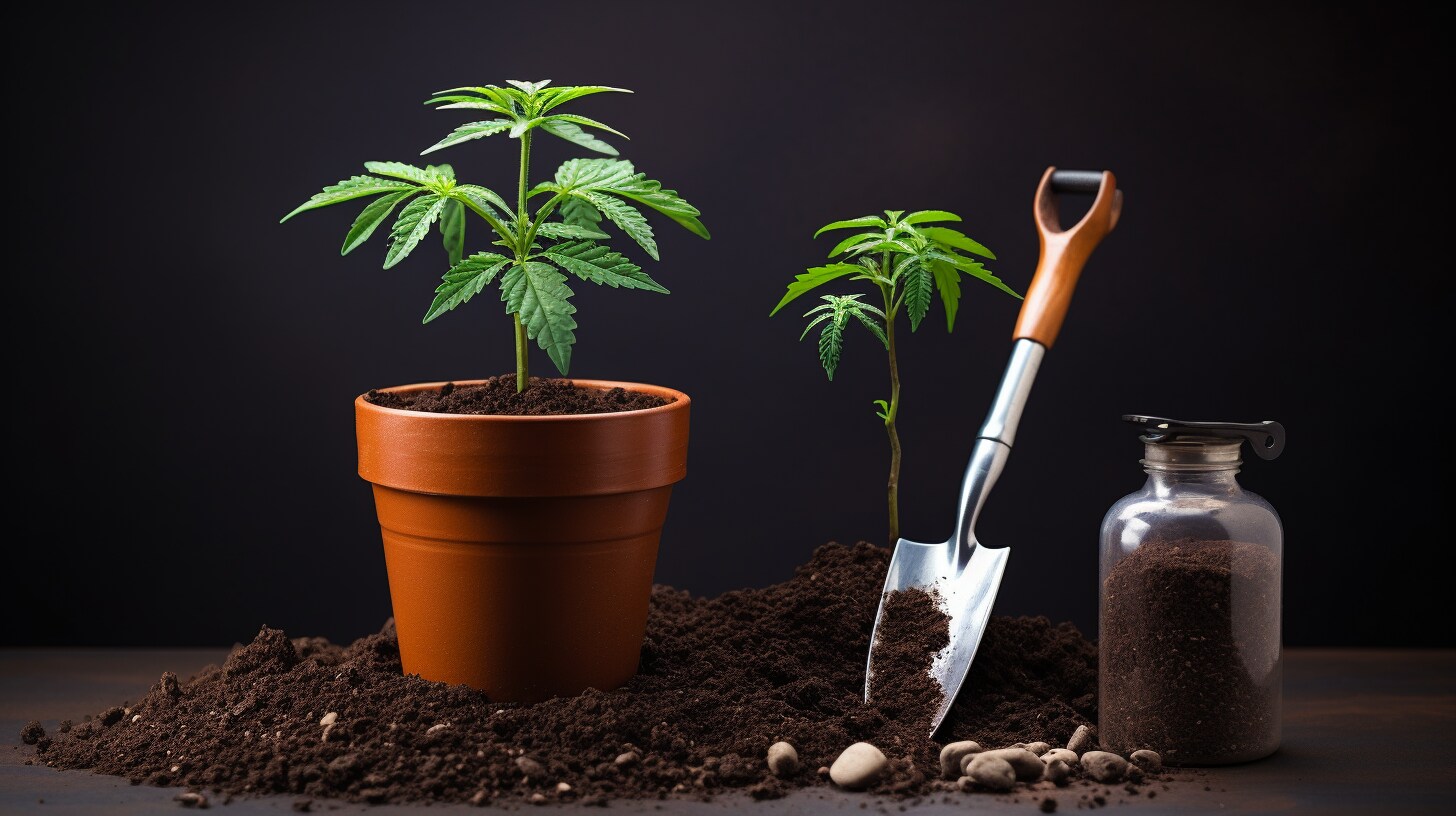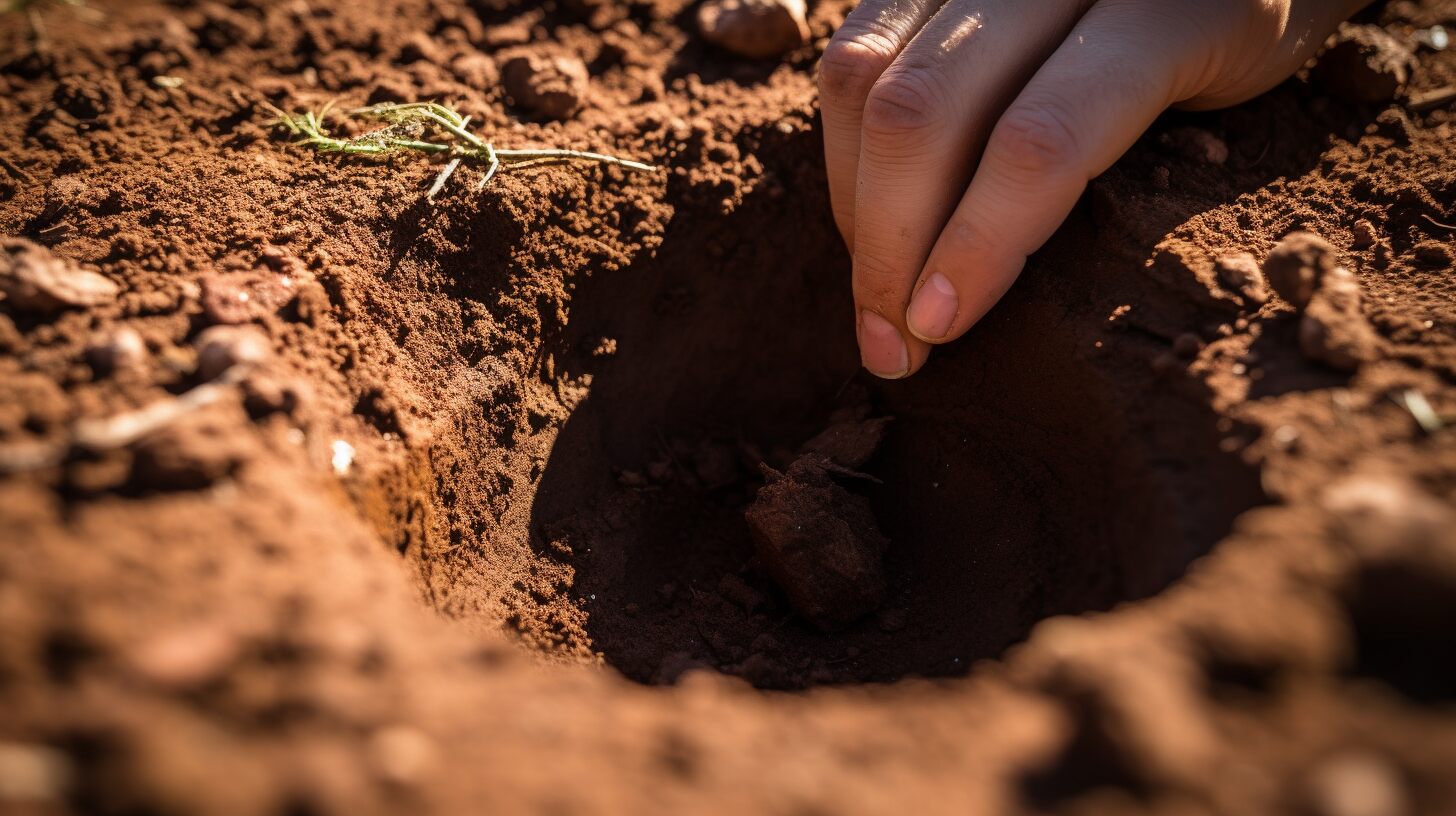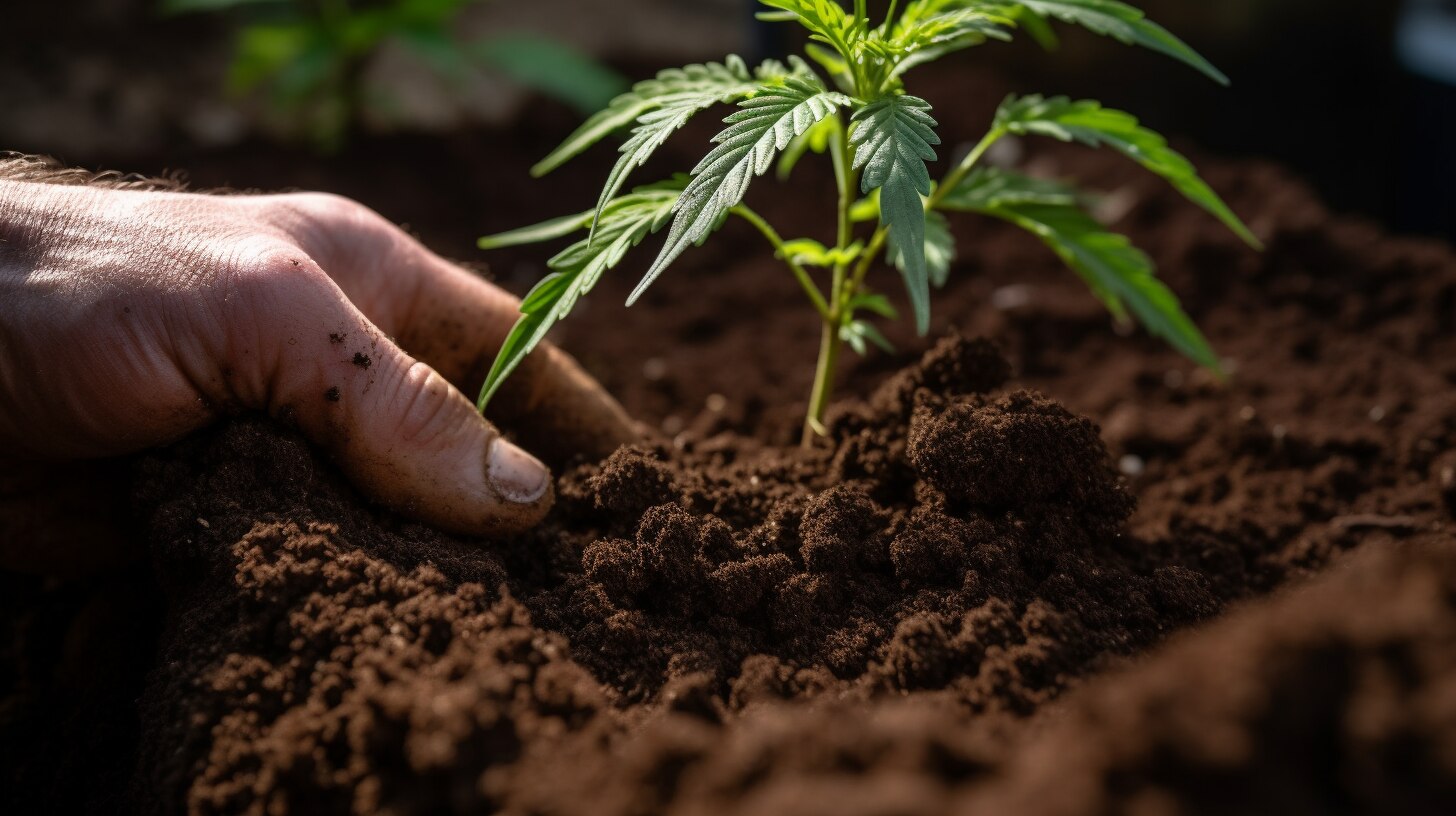Que sont les graines de cannabis et comment les planter ?
Les graines de cannabis sont de petites graines brun foncé provenant de plantes de cannabis femelles. Ils contiennent toutes les informations génétiques nécessaires pour produire une nouvelle plante et peuvent être utilisés pour cultiver du cannabis dans presque tous les environnements.
Lorsqu’elles sont cultivées en intérieur, les graines de cannabis peuvent germer en terre ou en culture hydroponique, chaque méthode produisant des résultats légèrement différents. Avant de planter vos graines de cannabis, il est important de préparer votre zone de culture et de choisir le bon terreau pour vos semis.
Une fois que tout est prêt, vous pouvez commencer par tremper les graines de mauvaises herbes toute la nuit dans l'eau avant de les planter à environ 2-3 cm de profondeur dans le sol ou le substrat hydroélectrique de votre choix. Assurez-vous que le sol reste humide et chaud (idéalement entre 18 et 21 degrés Celsius), car cela contribuera à accélérer la méthode de germination.
Dans quelques jours ou semaines, vous devriez commencer à remarquer des pousses émergeant du sol. Après environ 6 semaines, vous pouvez commencer à nourrir vos plantes avec des nutriments spécialement conçus pour les plantes de cannabis. Avec des soins et une attention appropriés, vos plants de cannabis devraient bientôt être prêts à être récoltés !
À Lire Plus : À quoi ressemblent les graines de cannabis ?
Avantages de la culture du cannabis à partir de graines
Cultiver du cannabis à partir de graines présente de nombreux avantages pour les cultivateurs avancés. Non seulement vous pourrez choisir la variété de cannabis qui correspond le mieux à vos besoins, mais vous économiserez également de l’argent à long terme. Cultiver à partir de graines vous permet également de contrôler les conditions environnementales et les nutriments que vos plantes reçoivent, ce qui signifie que vous obtiendrez un rendement de meilleure qualité que si vous les cultiviez à l'aide de clones ou de boutures.
Vous pouvez également réduire le risque de parasites et de maladies en commençant avec des graines saines et exemptes de maladies. Enfin, la culture à partir de graines offre une plus grande diversité génétique parmi les plantes, vous permettant de sélectionner des individus présentant des caractéristiques souhaitables telles que la saveur ou la puissance.
Choisir les bonnes graines de cannabis
Choisir les bonnes graines de cannabis est une étape importante dans toute opération de culture réussie. Tout d’abord, il est important de décider quel type de cannabis vous souhaitez cultiver : indica, sativa ou une variété hybride contenant des éléments des deux. Ensuite, vous devez considérer le stade de floraison, le potentiel de rendement et la puissance de la variété que vous choisissez.
Graines féminisées ou régulières
Lors du choix des graines de cannabis, il est important de choisir entre des graines féminisées ou régulières. Les graines de cannabis féminisées sont spécialement sélectionnées pour produire des plantes femelles avec un taux de réussite plus élevé que les graines ordinaires, qui produiront à la fois des plantes mâles et femelles. Pour les cultivateurs débutants à la recherche de rendements élevés et d’une puissance maximale, les graines féminisées peuvent être le choix idéal.
D’un autre côté, les graines de cannabis régulières ont tendance à être plus abordables que leurs homologues féminisées et offrent aux sélectionneurs plus d’options parmi lesquelles choisir lors de la création de variétés uniques. En fin de compte, le choix entre des graines de marijuana féminisées ou régulières dépend de vos besoins individuels et de votre budget.
Variétés à floraison automatique et variétés à floraison non automatique
Les graines de cannabis à autofloraison sont celles qui poussent naturellement plusieurs têtes sur une seule tige. Ces plantes fleurissent généralement dans les 90 à 120 jours après la plantation, et vous devrez vérifier régulièrement la plante pour vous assurer qu’elle fleurit.
Les variétés de cannabis non autoflorissantes ne produisent pas plusieurs têtes sur une seule tige et mettent généralement plus de temps à fleurir – jusqu'à 180 jours. Si vous voulez éviter d’avoir à vérifier la plante tous les quelques jours, choisissez une variété non autoflorissante.
Préparer le sol pour planter des graines de cannabis
Une fois que vous avez obtenu vos graines de cannabis, il est important de préparer le sol avant de les planter. Le meilleur sol pour les plants de cannabis est un sol riche en nutriments, bien drainé et légèrement acide. Pour y parvenir, mélangez des matières organiques telles que du fumier composté ou du paillis pour améliorer le drainage et l'aération.
De plus, l’ajout d’un engrais à libération lente dans le sol garantira à vos plantes tous les nutriments nécessaires à une croissance réussie. Il est également important de s’assurer que le pH du sol se situe entre 6 et 7 pour une croissance optimale des plantes.
Une fois que vous avez atteint la texture et le niveau de pH souhaités, il est temps de commencer à planter ! Assurez-vous que chaque graine dispose de suffisamment d'espace (à au moins 2 pouces de distance) lorsqu'elle est plantée pour qu'elle pousse correctement. Arrosez légèrement et souvent les graines nouvellement plantées, en veillant à ne pas trop arroser car cela pourrait entraîner la pourriture des racines et d'autres problèmes. Avec une bonne préparation du sol et des soins adéquats, vos graines en pot devraient commencer à germer dans un délai de deux semaines !
Nutriments nécessaires pour des plantes saines
Fournir les bons nutriments à vos plants de cannabis est essentiel pour obtenir une croissance saine et dynamique. Les trois principaux nutriments dont toutes les plantes ont besoin sont l’azote, le phosphore et le potassium (également appelé NPK).
Bien que ces éléments puissent être trouvés naturellement dans le sol, ils ne suffisent pas toujours à une croissance optimale des plantes. Pour compléter les niveaux naturels de NPK du sol, pensez à ajouter des engrais organiques tels que du compost ou du guano de chauve-souris.
De plus, l’ajout d’oligo-éléments tels que le calcium et le magnésium contribuera à améliorer la santé globale de vos plantes. Enfin, fournir des quantités suffisantes de lumière pour favoriser la photosynthèse est également important pour une croissance réussie.
Équilibre du pH du sol pour des conditions optimales
L’équilibre du pH du sol est un facteur important lors de la culture des plantes de cannabis. La plage de pH idéale pour la plupart des variétés de cannabis se situe entre 6,0 et 7,0, ce qui est légèrement acide. Le maintien de cette plage de pH optimale peut être obtenu en testant régulièrement le sol et en l'ajustant avec de la chaux ou du soufre, en fonction des résultats du test.
Lorsque le sol a un pH plus acide, l'ajout de chaux aidera à l'augmenter, tandis que l'ajout de soufre le diminuera s'il est trop élevé. De plus, les engrais doivent également être ajustés en conséquence, car certains peuvent affecter l'équilibre du pH du sol.
Compost ou autre matière organique à incorporer au sol
Le compost ou autre matière organique est un excellent moyen d’ajouter des nutriments et des micro-organismes bénéfiques au sol pour les plantes de cannabis. Le compost ajoute de la matière organique essentielle, qui aide à réguler les niveaux d'humidité du sol et augmente sa capacité à retenir les nutriments.
Il fournit également des minéraux utiles tels que l’azote, le phosphore et le potassium qui contribuent à la croissance des plantes. De plus, l’incorporation de compost dans le sol contribue à améliorer le drainage et l’aération et encourage les bactéries bénéfiques qui peuvent aider à protéger les plantes contre les maladies et les ravageurs.
La méthode des serviettes en papier (pour la germination)
TLa méthode des serviettes en papier est un moyen simple et efficace de faire germer des graines de cannabis. Commencez par tremper deux feuilles de papier absorbant dans l’eau jusqu’à ce qu’elles soient complètement saturées. Placez délicatement les graines entre les deux couches de papier absorbant humide et pliez-les, emprisonnant les graines à l'intérieur.
Placez la serviette en papier pliée sur une assiette ou une autre surface non poreuse et maintenez-la humide en la vaporisant régulièrement d'eau. Après quelques jours, vous devriez commencer à voir de petites racines pivotantes émerger des graines – cela signifie qu’elles ont commencé à germer avec succès !
Une fois que cela se produit, transférez-les dans le sol ou dans un autre support de votre choix pour une croissance ultérieure. La méthode des serviettes en papier est un moyen simple de démarrer vos plants de cannabis du bon pied, en leur donnant une longueur d'avance avant la plantation.
Qu'est-ce que la méthode des serviettes en papier ?
La méthode des serviettes en papier est un moyen simple et efficace de faire germer des graines de cannabis. Cela consiste à tremper deux feuilles de papier absorbant dans l'eau, puis à placer les graines de marijuana de haute qualité entre elles et à les plier.
À partir de là, la serviette en papier pliée doit être placée sur une assiette ou une autre surface non poreuse et maintenue humide en la vaporisant régulièrement. Après quelques jours, vous devriez commencer à voir des racines pivotantes émerger des graines de marijuana – cela signifie qu'elles ont commencé à germer avec succès !
Matériel nécessaire pour la méthode des serviettes en papier
Pour utiliser la méthode des serviettes en papier pour faire germer des graines de cannabis, vous aurez besoin de deux morceaux de serviettes en papier, d'eau, d'une assiette ou d'une autre surface non poreuse et de quelque chose avec lequel vaporiser la serviette en papier (comme un flacon pulvérisateur). Une fois tous ces éléments rassemblés, vous êtes prêt à commencer à faire germer vos graines de cannabis !
Planter vos graines de cannabis dans des conteneurs ou directement dans le sol
Planter des graines de cannabis dans des conteneurs ou directement dans le sol est une excellente façon de démarrer votre jardin. Si vous choisissez d'utiliser des contenants, de nombreux types de matériaux sont disponibles, notamment le plastique, la céramique et le tissu.
Les conteneurs en plastique sont légers et faciles à déplacer, mais peuvent ne pas durer aussi longtemps que d'autres types de matériaux de conteneurs. En revanche, les pots en céramique ou en tissu sont plus lourds et plus durables, mais peuvent être coûteux et difficiles à déplacer.
Lorsque vous plantez vos graines de cannabis dans n'importe quel type de contenant, il est important de penser à les arroser régulièrement. Pour vous assurer que vos plantes matures ont suffisamment d'eau, vérifiez le niveau d'humidité du sol tous les quelques jours. S'il semble sec à quelques centimètres sous la surface, il est temps de donner un peu plus d'eau à vos plants de marijuana. Assurez-vous cependant de ne pas trop arroser, car cela pourrait provoquer la pourriture des racines et tuer vos plantes de cannabis !
La quantité de lumière nécessaire à une plante de cannabis dépend du stade de croissance dans lequel elle se trouve. Pour le processus de germination et les étapes de semis (jusqu'aux semaines 3 et 4 environ), le cannabis a besoin d'au moins 18 heures de lumière par jour ; une fois cette période passée, ils ont besoin de 12 heures par jour pour la floraison et la production de bourgeons.
De plus, les plantes de cannabis ont besoin de certains nutriments pour une croissance saine : assurez-vous d'utiliser un engrais avec des niveaux élevés d'azote pendant la phase végétative, puis passez à un engrais avec des niveaux plus élevés de phosphore pendant la floraison pour une production maximale de têtes !
Pour terminer
Cultiver votre marijuana est une expérience enrichissante, vous permettant d'avoir un contrôle total sur l'ensemble du processus et du résultat. Avec les bons matériaux, les bonnes fournitures et les connaissances nécessaires à la culture de la marijuana, vous avez le potentiel de créer un magnifique jardin extérieur composé de plantes saines et de haute qualité.
Bien que cela puisse être intimidant pour les débutants au début, avec des recherches et des conseils appropriés, n’importe qui peut apprendre à réussir à planter de la marijuana dans son jardin.


 English
English 

